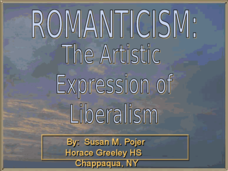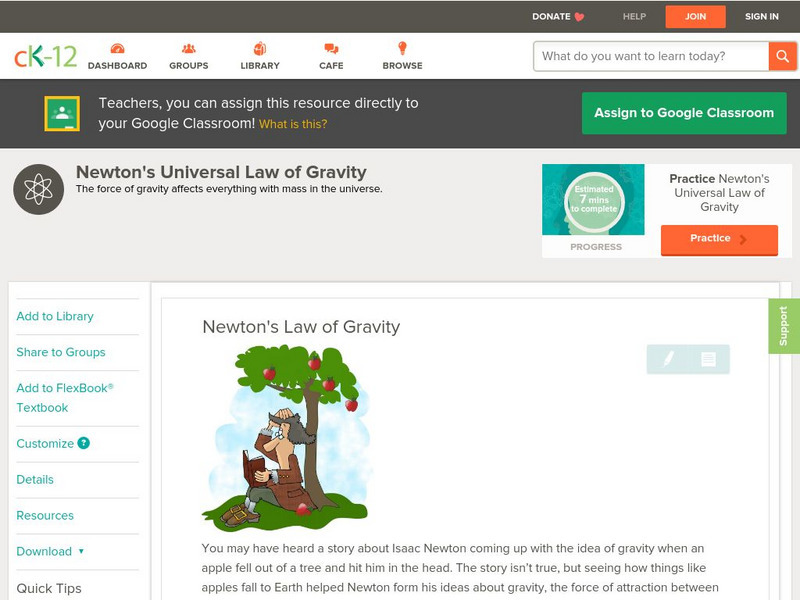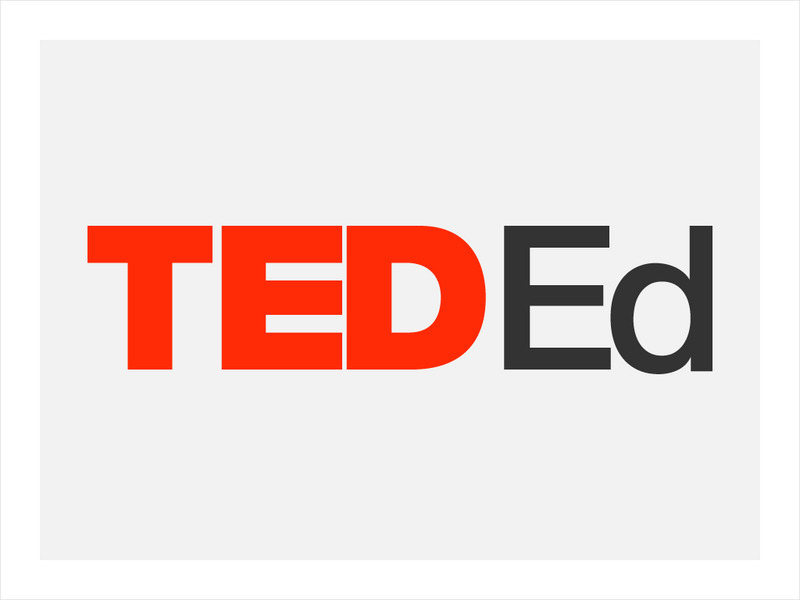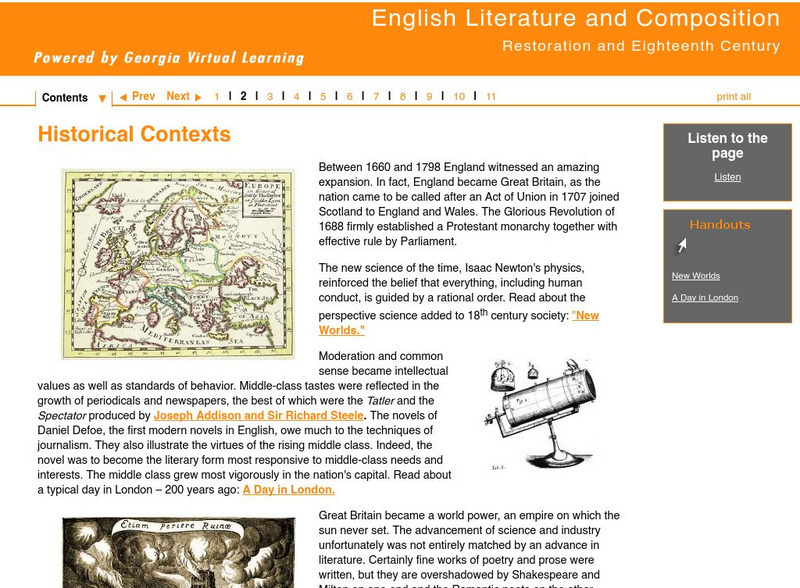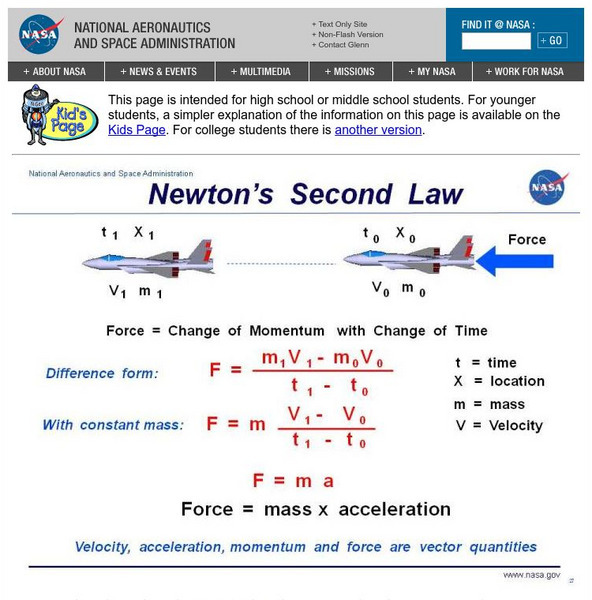Curated OER
Newton's Laws
Beginning with definitions of mass and foce, this excellent set of slides summarizes Newton's Laws of motion and universal bravitaions. Components of each law are explained along with examples and questions to inspire discussion. This is...
Curated OER
CPO Science - Foundations of Physics
An object in motion will remain in motion, and your physics learners will really get moving by viewing this PowerPoint! They examine each of Newton's laws of motion, learning about force, inertia, acceleration, and equilibrium. They are...
Curated OER
The Scientific Revolution: 1500-1700
Discover the key players involved in reshaping scientific thought during the scientific revolution. Basic information regarding major contributions of Brahe, Copernicus, Galileo, Bacon, Kepler, Descartes, and Newton are covered in this...
Mr. E. Science
Our Solar System
The presentation starts with the scientists who made discoveries about our solar system: Ptolemy, Copernicus, Galileo, Brahe, Kepler, and Newton. It also covers the planets, inner, outer, and Pluto, satellites, and an in-depth discussion...
Curated OER
Force Diagrams
Seeming incomplete, this slide show introduces physical science novices to the balancing of forces and drawing force diagrams. The first seven slides work well to meet this purpose. The remaining slides, however, turn viewers over to...
Urbana School District
Light
You matter, unless you multiply yourself by the speed of light ... then you energy. Presentation covers the behavior of light as both a wave and a particle, light versus sound, space travel, why objects have colors, depth perception,...
Curated OER
Light - Stop Faking It!
This well-designed presentation covers many important aspects of the science behind light. In it, pupils view slides that have a lot of the important vocabulary associated with science, slides of famous scientists who made important...
Curated OER
Romanticism: The Artistic Expression of Liberalism
The epic clash of reason and emotion comes to life in this informative presentation. Detailing the period of Romanticism in 19th century Europe, these slides contain pictures of the most famous pieces of art during this period. Viewers...
Curated OER
An Introduction to British Romanticism
How did the period of British Romanticism start? Introduce your class to this period and some key figures who were influential during this time like William Blake, Percy Shelley, and John Locke. This presentation serves as a very basic...
CK-12 Foundation
Ck 12: Physical Science: Newton's Law of Gravity
[Free Registration/Login may be required to access all resource tools.] Newton's law of universal gravitation and factors that affect the strength of gravity between two objects.
Physics Classroom
The Physics Classroom: Newton's Law of Universal Gravitation
States the equation of Newton's law of universal gravitation. States the value of G and uses the equation to solve problems.
Physics Classroom
The Physics Classroom: Inertia and Mass
This is part of a lesson on Newton's Laws of Motion that focuses on inertia and mass. It restates Newton's first law of motion. The lesson also gives a helpful visual description concerning friction.
Physics Classroom
The Physics Classroom: The Apple, the Moon, and the Inverse Square Law
Describes the logic behind the development of Newton's law of universal gravitation. Beginning with Johannes Kepler and his three laws of planetary motion, content walks the reader through Newton's thought process and development of this...
TED Talks
Ted: Ted Ed: Free Falling in Outer Space
With a little help from Sir Isaac Newton, Matt J. Carlson explains the basic forces acting on an astronaut during a free fall. [2:59]
TED Talks
Ted: Ted Ed: Football Physics: The "Impossible" Free Kick
Learn about the Magnus Effect, a phenomenon discovered by Isaac Newton. Brazilian football player Roberto Carlos used it to score a seemingly impossible goal in a game of football in 1997. Includes a video, multiple-choice and open-ended...
Physics Classroom
The Physics Classroom: Cavendish and the Value of G
A short description of how Cavendish measured the value of G - the universal gravitation constant and supported Newton's theory. Illustrated.
Vision Learning
Visionlearning: Mechanics: Gravity: Newtonian Relationships
Explanation of how astronomers and scientist developed the current theories of gravity.
TED Talks
Ted: Ted Ed: The Story Behind Your Glasses
Video describes the developments and advancements in the history of the study of optics. [4:17] Includes a short quiz and a list of additional resources to explore.
Georgia Department of Education
Ga Virtual Learning: Restoration and Eighteenth Century: Historical Contexts
This is an historical context for the Restoration and Eighteenth Century period in England. It provides a list of dates and titles for sections of the period and discusses the authors and characteristics of each. It provides links to "A...
NASA
Nasa: Beginner's Guide to Aerodynamics
This site from NASA provides a graphic depicting Newton's second law. Graphic is accompanied by an explanation. Part of a larger site with additional information on Newton's laws.
Tom Richey
Tom Richey: The Counter Reformation
Tom Richey offers a thorough slideshow incorporatin Sir Isaac Newton's Third Law of Motion while reviewing the historic details of the Counter-Reformation. Find out who disagreed with the Reformation movement.
Other popular searches
- Newton, Isaac
- Sir Isaac Newton
- Isaac Newton Power Point
- Isaac Newton 2nd Law
- Isaac Newton and Gravity
- Isaac Newton Gravity
- Education of Isaac Newton
- Isaac Newton Research
- Isaac Newton Vocabulary
- Pics of Isaac Newton
- Pods of Isaac Newton
- Sir Isaac Newton Apples







